What to do with faded roses on the bushes?
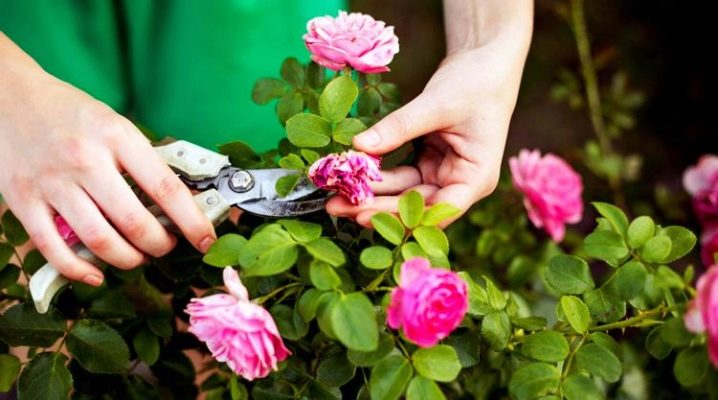
Many people grow roses in their homestead plots, especially in the southern regions. But novice gardeners always have many questions, since these flowers require special attention and quality care. One of the questions that worries summer residents is what to do with the bushes when the roses have already faded. Therefore, it is worth considering in more detail.
How to prune after the first flowering?
It is a mistake to think that if the rose has faded, then nothing else needs to be done with the buds on the bushes. In fact, there is still a lot of work to do. And this is not only the cutting of flowers, which can be carried out in July and August, and throughout the season, this is also a whole list of care measures.
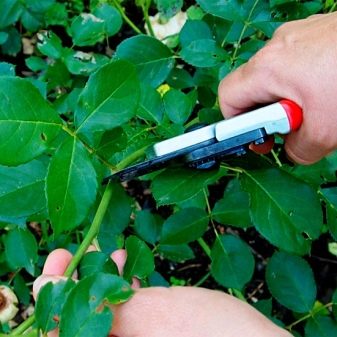
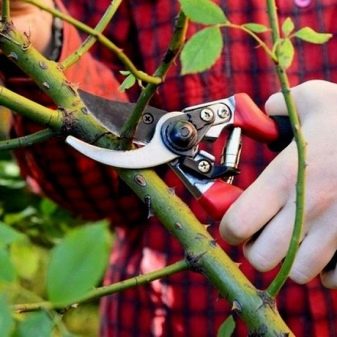
Pruning is very important for any roses, especially those that bloom several times throughout the season.... After flowering, the strength of the rose is spent on seed formation. But seed reproduction is a complex and not always successful process. Therefore, almost no one uses this method as the main one. Faded buds must be removed. Thus, the rose will direct its energies to the further formation of new buds, as well as to the development of the bush. This is how the buds of the next year will be formed.
And even if the rose does not bloom again, timely pruning will allow the bush to look neat and beautiful, as well as ensure the formation of abundant and healthy foliage, which is also important.
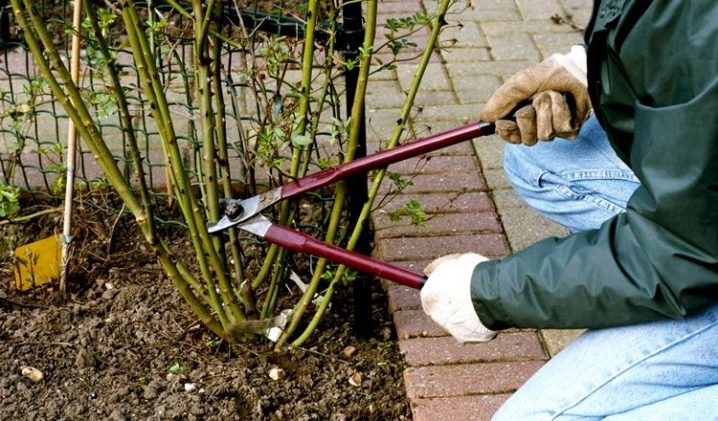
In addition, the rose requires sanitary pruning. In this case, it is necessary to remove not only dry flowers, but also broken branches, diseased shoots. All this favors the development of the bush. It is also very important to remove the branches growing inward, they contribute to the thickening of the bush, which is not at all useful for a rose.
Top dressing
Any rose on the street in the garden, whether climbing, bush, floribunda or other varieties, needs feeding, and after flowering as well.
-
In the process of flowering, a rose spends a lot of energy, so it is imperative to replenish them, supplying the plant with nutrients. In this case, the best option would be to alternate root and foliar dressings.
-
For foliar feeding, an ash solution is very often used, which supplies the rose with potassium, phosphorus, calcium... To do this, it is enough to pour two glasses of ash with a liter of boiling water, let it brew for several hours, and then dilute with 10 liters of water and start watering.
-
Provided that the roses are still in bloom, they should be fertilized with nitrogen. A urea solution is suitable for this purpose. One tablespoon can be diluted in a bucket of water and poured over the rose.
-
Another good top dressing is grass and chicken droppings. The bucket is half filled with cut grass, a liter of liquid chicken manure is added. You need to infuse the solution for a week, then strain and dilute 10 liters of water. Then you can water the rose bushes.
-
If you do not want to prepare top dressing yourself, you can use ready-made preparations that can be purchased at any garden store. These include Fertika, Universal-2, Spring-Summer, Floral Aquarine, Agricola Aqua and others. As a rule, they indicate the required dosage and methods for preparing the solution.
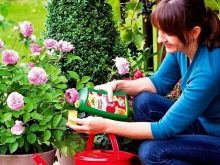
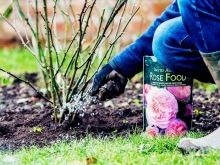
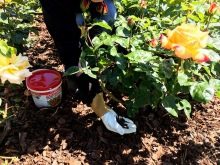
Soil loosening
Caring for plants after flowering includes loosening. This procedure is especially relevant in the summer. If the roses have faded in July or August, loosening should be carried out along with other procedures.
It is especially important after watering, this will help air to penetrate into the soil due to the fact that a crust will not form on the surface.
In addition to loosening, mulching is also worth carrying out, this will also help to retain moisture and prevent weed growth. Tree bark or sawdust will work best, and will also ennoble the look of a flower bed with roses.
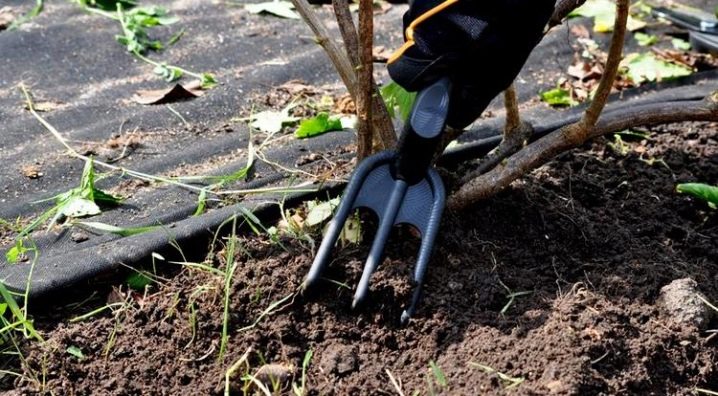
Protection against diseases and pests
The rose is susceptible to a variety of diseases and pests. Therefore, in order to protect the bushes, you should not wait for the onset of these unpleasant moments, it is better to prevent them.
After all the dried buds are cut off, you can water the roses and spray them with Fitosporin. It is sold in powder, paste, and liquid form. There is also a special "Fitosporin for flowers". All processing schemes are indicated on the package, and they must be followed. It will protect the rose from powdery mildew and other diseases that often affect the rose.
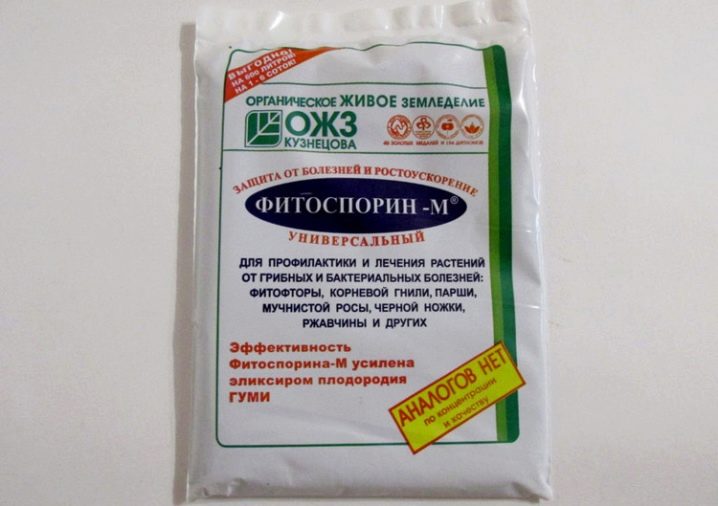
If the disease has covered the bushes thoroughly, you can use more radical drugs, for example, Bordeaux liquid.
Often the rose is affected by pests such as aphids and spider mites. In these cases, you can prepare a soap solution using tar soap. A very good option is the ready-made composition "Green Soap", which can be purchased at a garden store.
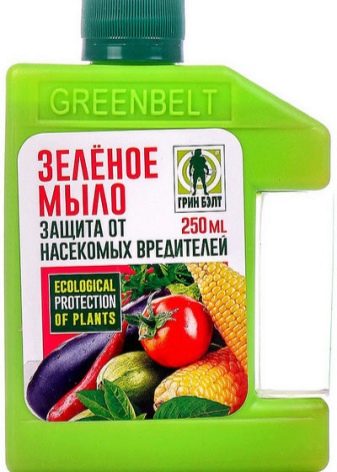
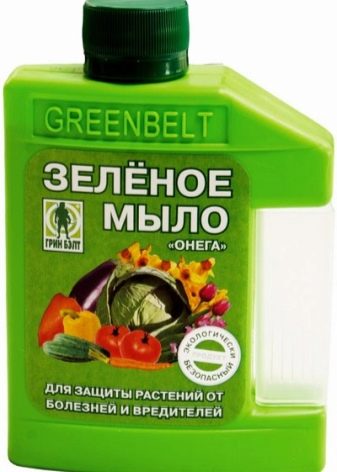
As a prophylaxis against any misfortune, folk remedies are also suitable. These include:
-
ash infusions;
-
onion peel;
-
garlic;
-
ammonia;
-
a decoction of marigolds.
Many of these components will not only help to cope with diseases and pests, more precisely, to prevent their occurrence, but also serve as feeding at the same time.
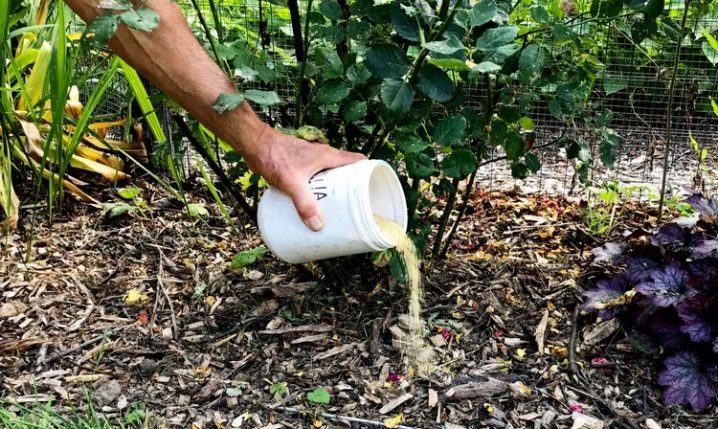
In addition, roses can not only be watered and sprayed, but also powdered. For this purpose, a powder prepared on the basis of ash or tobacco is well suited.
It is worth noting that, when the pests have already appeared, it is required to very carefully process each leaf, and from the inside too. This will give confidence that all pests have left the bush and will not be able to reproduce further. In this case, one treatment will not be enough, it is imperative to repeat the procedures a couple more times. It all depends on the degree of damage to the bush. In case of severe damage, before processing, the affected shoots must be removed, they still cannot be restored, and new ones will grow already healthy.

































































































The comment was sent successfully.